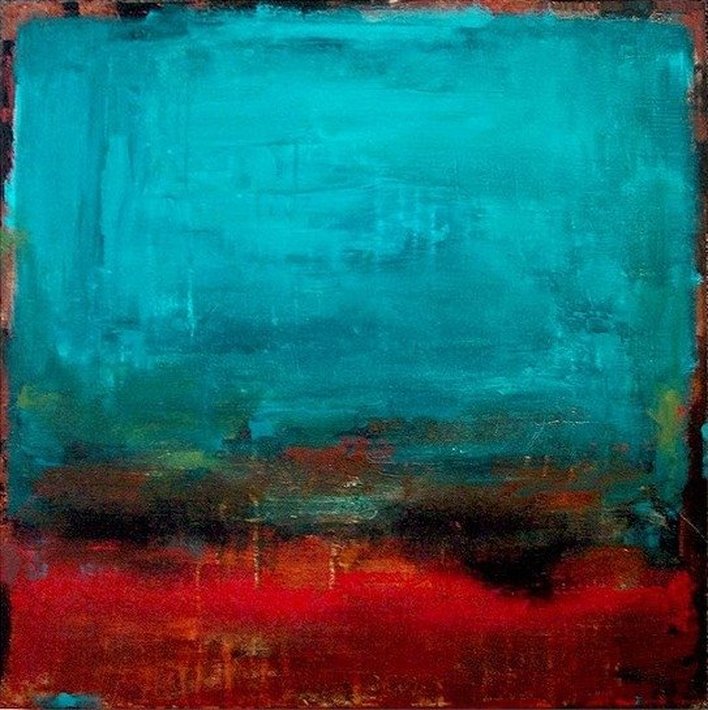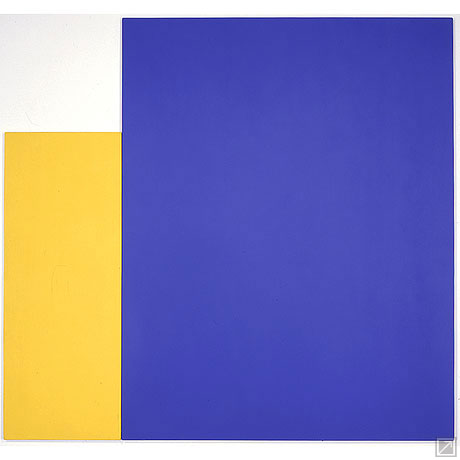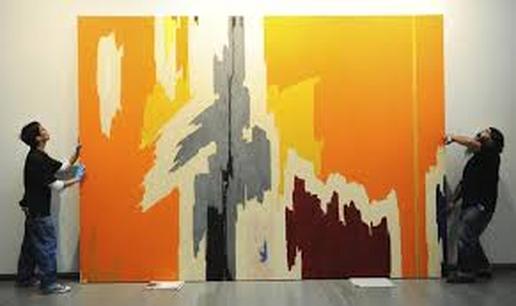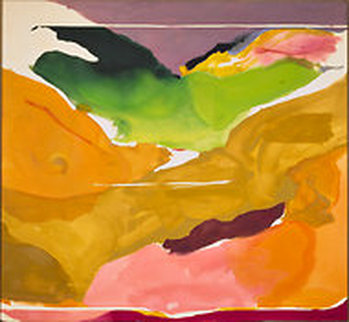 Check out these artists: http://www.abstract-art-framed.com/famous-abstract-art.html Art Challenge: Create an abstract painting with acrylic paint Process: Examine the work of abstract painters (check out this great link http://www.theartstory.org/movement-color-field-painting.htm Analyze and study the work Paint a recycled cereal box with white gesso Paint the "canvas" with colors and palette of your choice Evaluation: Craftsmanship Concept Work Habits Critique I think that if you can turn off the mind and look only with the eyes, ultimately everything becomes abstract.—Ellsworth Kelly Art Terms Color Field Painting is part of the Abstract Expressionist family of artists (a.k.a., the New York School). They are the quieter siblings, the introverts. The Action Painters (for example, Jackson Pollock and Willem de Kooning) are the loud siblings, the extroverts. Color Field Painting was called "Post-Painterly Abstraction" by Clement Greenberg. Color Field Painting and Action Painting have the following in common:
Often Color Field Paintings are huge canvases. If you stand close to the canvas, the colors seem to extend beyond your peripheral vision, like a lake or an ocean. These mega-size rectangles require letting your mind and eye leap right into the expanse of red, blue or green. Then you can almost feel the sensation of the colors themselves. Color Field owes a great deal to Kandinsky in terms of philosophy, but does not necessarily express the same color associations. The best known Color Field Painters are Mark Rothko, Clyfford Still, Jules Olitski, Kenneth Noland, Paul Jenkins, Sam Gilliam and Norman Lewis, among many others. These artists still use traditional paintbrushes and also the occasional air brush. Helen Frankenthaler and Morris Louis invented Stain Painting (allowing the liquid paint to seep into the fibers of an unprimed canvas. Their work is a specific kind of Color Field Painting. Hard-Edge Painting may be considered a "kissing cousin" to Color Field Painting, but it is notgestural painting. Therefore, Hard-Edge Painting does not qualify as "expressionist," and is not part of the Abstract Expressionist family. Some artists, such as Kenneth Noland, practiced both tendencies: Color Field and Hard-Edge. How Long Has Color Field Painting Been a Movement?Color Field Painting began around 1950, following the initial shock of the Action Painters. Helen Frankenthaler, as I write this, is still with us, so that means Color Field Painting is alive--and hopefully well, too. What Are the Key Characteristic of Color Field Painting?
Painting by Clyfford Still Painting by Helen Frankenthaler
Comments are closed.
|
Drawing and Painting
|



 RSS Feed
RSS Feed
